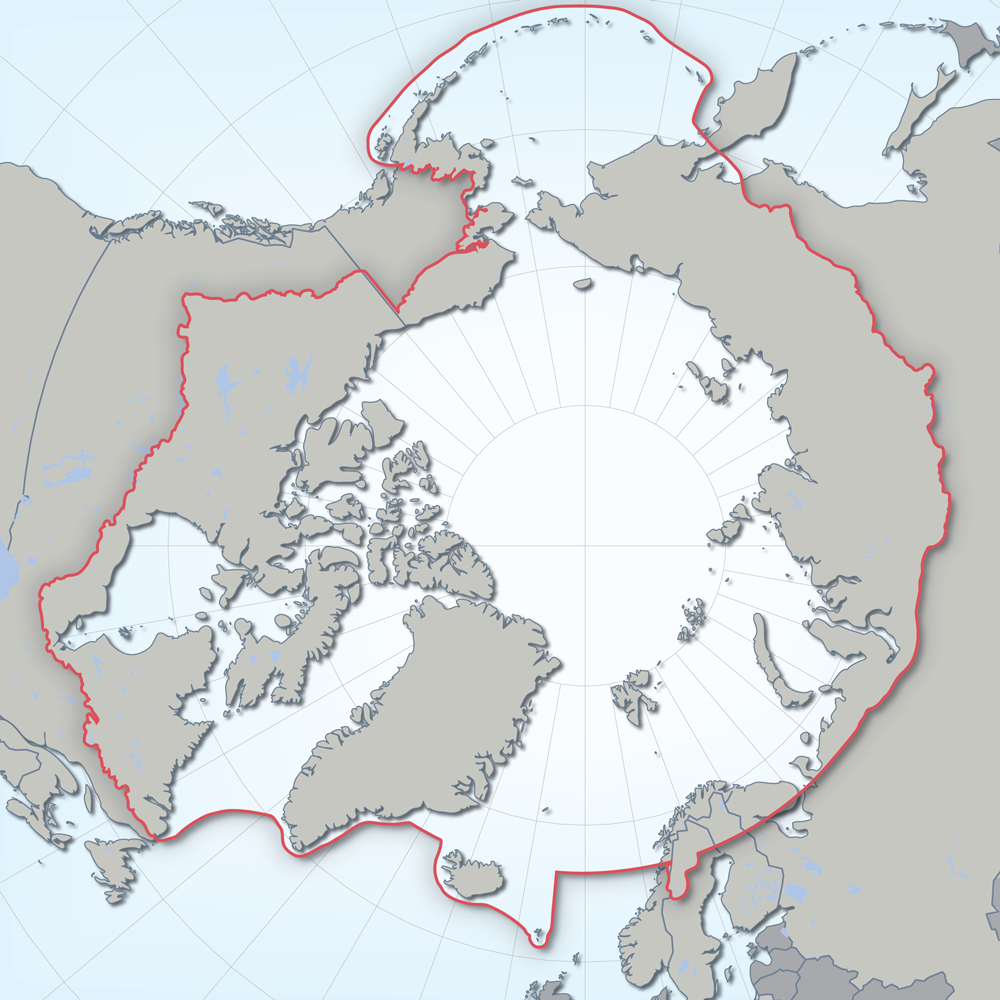boundaries
Type of resources
Available actions
Topics
Keywords
Contact for the resource
Provided by
Years
Formats
Representation types
Update frequencies
status
Scale
-

Defines the area covered by the the Conservation of Arctic Flora and Fauna (CAFF) working group of the Arctic Council. Each Arctic Council country was responsible for defining their Arctic boundary.
-
Appendix 9.3 Borderline vascular plant species (“b”) with indication of PAF code number, reaching the southernmost part of the Arctic subzone E. Arctic floristic provinces, subzones (A-E), neighbouring boreal or boreo-alpine zone (N) derived from Elven (2007).
-
Appendix 10.1. Updated Panarctic Lichen Checklist as used for the calculations (version March 2013) with data on preferred substrate, growth form (crustose, squamulose, foliose, fruticose), rarity of species within and outside the Arctic, occurrence in the low and high Arctic and occurerence in the floristic provinces.
-
Appendix 9.7 Species list with full names of liverworts of Greenland according to Damsholt (2010, unpublished) including 22 families, 50 genera and 173 species.
-
Appendix 11. Taxa of hetorotrophic protists reported from Foxe Basin, Canada (FB), Disko Bay, W Greenland (DB; Vors 1993), the Greenland Sea (GLS; Ikävalko & Gradinger 1997) and Northern Baffin Bay, Canada (NBB; Lovejoy et al. 2002).
-
Appendix 17.3. Phylogeographic and population genetics studies of selected Arctic species.
-
Appendix 6.1.1. Freshwater and diadromous fish species by area of occurrence within the High Arctic, Low Arctic and sub-Arctic. Appendix 6.1.2. Freshwater and diadromous fishes of the Palearctic and Nearctic regions. Appendix 6.1.3. Occurrence of freshwater and diadromous fishes in the Arctic and sub-Arctic regions of the seven geographical regions referred to in the main text. Appendix 6.1.4. Freshwater and diadromous fish species status summary for species assessed at some level of risk by country or region
-

Within the CAFF boundary there are 92 protected areas recognised under global international conventions. These include 12 World Heritage sites3 (three of which have a marine component) and 80 Ramsar sites, which together cover 0.9% (289,931 km2) of the CAFF area (Fig. 4). Between 1985 and 2015, the total area covered by Ramsar sites4 almost doubled, while the total area designated as World Heritage sites increased by about 50% in the same time period (Fig. 5). ARCTIC PROTECTED AREAS - INDICATOR REPORT 2017
-
Appendix 9.5 The assignment of liverwort genera of Arctic Russia to families after Konstantinova et al. (2009) and Damsholt (2002)
-
Appendix 17.2. Cryptic speciation in selected Arctic terrestrial and marine species.
 CAFF - Arctic Biodiversity Data Service (ABDS)
CAFF - Arctic Biodiversity Data Service (ABDS)